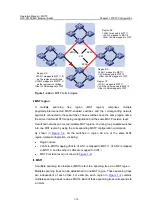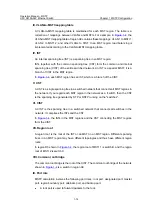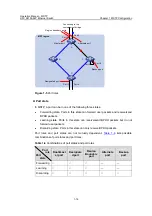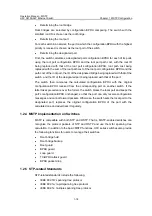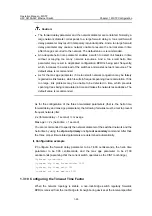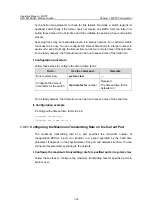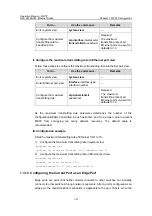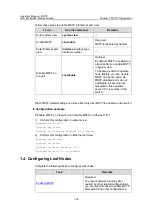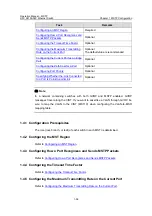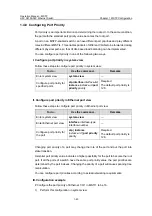
Operation Manual – MSTP
H3C S3100-52P Ethernet Switch
Chapter 1 MSTP Configuration
1-26
1.3.6 Configuring the MSTP Operation Mode
To make an MSTP-enabled switch compatible with STP/RSTP, MSTP provides the
following three operation modes:
z
STP-compatible mode, where the ports of a switch send STP BPDUs to
neighboring devices. If STP-enabled switches exist in a switched network, you can
use the
stp mode stp
command to configure an MSTP-enabled switch to operate
in STP-compatible mode.
z
RSTP-compatible mode, where the ports of a switch send RSTP BPDUs to
neighboring devices. If RSTP-enabled switches exist in a switched network, you
can use the
stp mode rstp
command to configure an MSTP-enabled switch to
operate in RSTP-compatible mode.
z
MSTP mode, where the ports of a switch send MSTP BPDUs or STP BPDUs (if
the switch is connected to STP-enabled switches) to neighboring devices. In this
case, the switch is MSTP-capable.
I. Configuration procedure
Follow these steps to configure the MSTP operation mode:
To do...
Use the command...
Remarks
Enter system view
system-view
—
Configure the MSTP
operation mode
stp mode
{
stp
|
rstp
|
mstp
}
Required
An MSTP-enabled switch
operates in the MSTP
mode by default.
II. Configuration example
# Specify the MSTP operation mode as STP-compatible.
<Sysname> system-view
[Sysname] stp mode stp
1.3.7 Configuring the Maximum Hop Count of an MST Region
The maximum hop count configured on the region root is also the maximum hops of the
MST region. The value of the maximum hop count limits the size of the MST region.
A configuration BPDU contains a field that maintains the remaining hops of the
configuration BPDU. And a switch discards the configuration BPDUs whose remaining
hops are 0. After a configuration BPDU reaches a root bridge of a spanning tree in an
MST region, the value of the remaining hops field in the configuration BPDU is
decreased by 1 every time the configuration BPDU passes one switch. Such a


